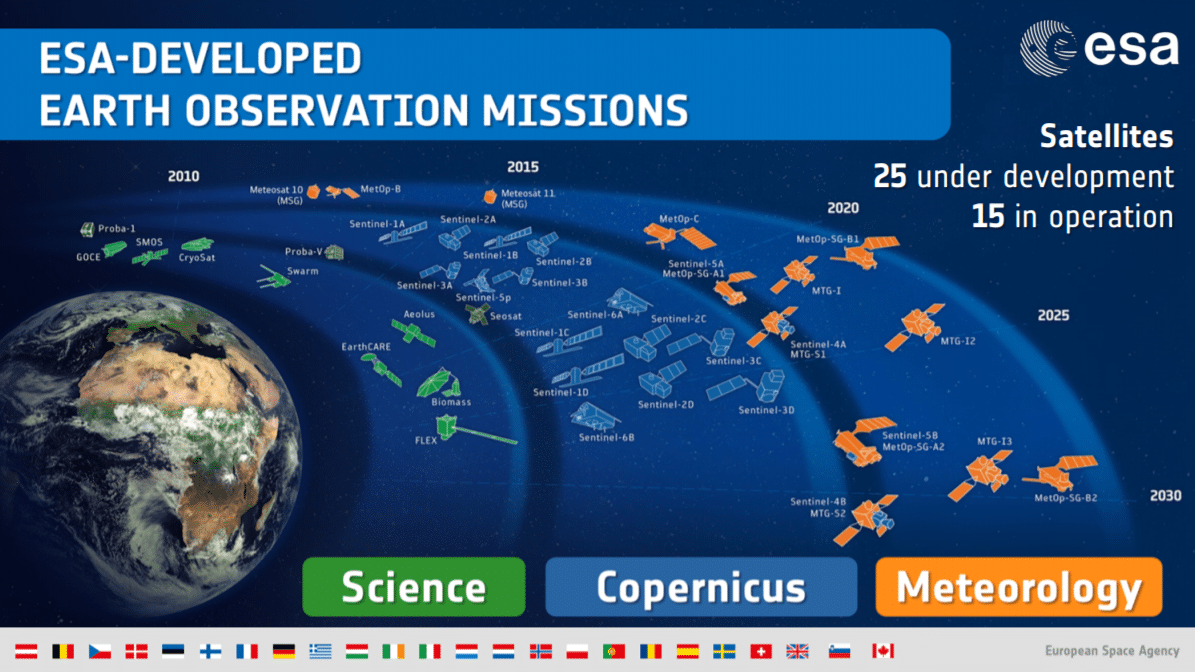
How do you count all the trees?
The technology behind a project like Resource Watch (https://resourcewatch.org) really gets my mind buzzing. Using hundreds of datasets and a map it allows anyone to “monitor the planet’s pulse”.
Sure, the final mile technology of this tool is relatively simple (plot some points on a map), but this magic is only possible because of a stack of other technologies and loads of data. Using these datasets it’s possible to explore NO2 concentrations, track forest fires, predict crop yields, and with some effort – literally know when a tree falls.
The World Resources Institute (https://www.wri.org/) created Resource Watch as part of its mission to sustain the planets natural resources. They are effectively counting the world’s trees every day!
So where does all the data come from?
The short answer is Space. Yes, literally from Space. The European Space Agency (https://www.esa.int/ESA) currently has 15 satellites observing the earth in various ways. The Sentinel class of satellites (https://sentinels.copernicus.eu/web/sentinel/home) are producing 15TB+ per day, with more than 16 petabytes of historical data. All this data is freely and publicly available from ESA Copernicus data hub (https://scihub.copernicus.eu/)

It’s great to have loads of data, but how do you get any useful answers?
The amount of data sent back to earth by the Sentinel’s does create a processing problem. Let’s imagine that Microsoft Excel could handle 16 petabytes of data and all you needed to do was download it onto your laptop. If you were to start downloading it today, it would take a while:
On my internet connection (44.736Mbps) this download is going to take more than a century. 102 Years, 55 Days 9 Hours, 42 Minutes, 40.92 Seconds
Even a really fast gigabit network (1000Mbps) is going to take years. 4 Years, 207 Days, 23 Hours, 59 Minutes, 48.08 Seconds
Download speed calculator (http://www.t1shopper.com/tools/calculate/downloadcalculator.php)
Moving data around is really slow. So, what you are going to need to do, is send your work to the data.
ESA have solved this problem by offering both a range of different services. ESA’s Data Information Access Services (DIAS) (https://www.copernicus.eu/en/access-data/dias) is 5 different cloud platforms that allow users to discover, manipulate, process and download Copernicus data and information.
Would you like a better data platform?
A great data visualisation platform – just like Resource Watch does for planet data. Source code for resource watch website https://github.com/resource-watch/resource-watch
A data distribution hub – just like the Copernicus Open Access Hub (previously known as Sentinels Scientific Data Hub) https://scihub.copernicus.eu/ Sentinel Data Hub (http://sentineldatahub.github.io/DataHubSystem/software_overview.html). By the way it’s open source too https://github.com/SentinelDataHub/dhus-distribution
A public cloud based data analysis hub – just like the HUGS project is creating https://www.hugs-cloud.com/. It’s open source too https://github.com/chryswoods/acquire
I hope you’ve enjoyed this Byte Sized Insight. Get in touch if you’ve seen anything that sparked your imagination and simply Click Subscribe to get our insights direct to your inbox!
Connect to Apps & Data now
Use Matatika to rapidly produce insights from more than 500+ apps and community sourcesData Leaders Digest
Stay up to date with the latest news and insights for data leaders.
